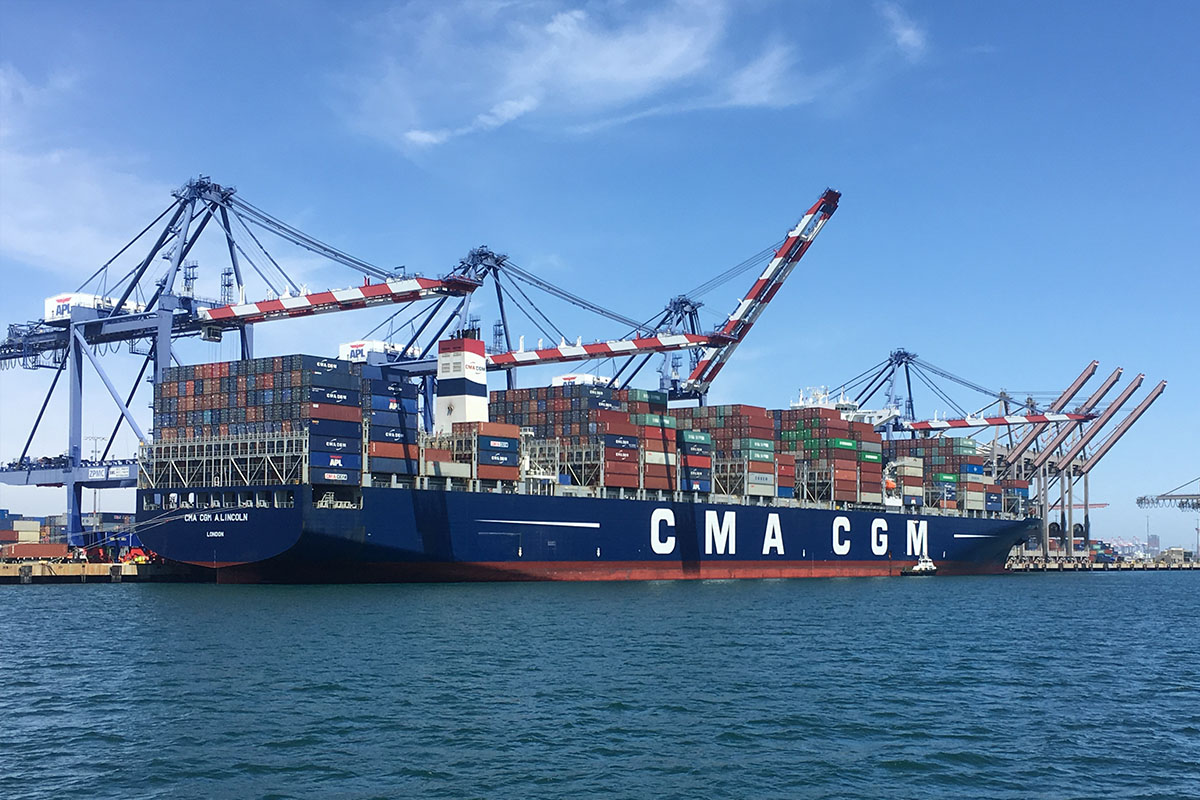
(Photo credit: Mike Steenhoek/Soy Transportation Coalition)
Covid-19 Kinks Supply Chain
November 2, 2021 | Bethany Baratta
Joined by leaders from the Port of Los Angeles, the Port of Long Beach, and the International Longshore and Warehouse Union, President Joe Biden announced efforts to address the stress confronting the global supply chain.
The recent announcement of operating 24 hours a day, seven days a week was made to help address the stress confronting the global supply chain. The ports represented during the official announcement accommodate 40% of the shipping containers imported into the United States.
The round-the-clock efforts mean moving cargo off ships and onto trucks and railcars to reach their destinations quicker.
This is just one piece of the supply chain, says Mike Steenhoek, executive director of the Soy Transportation Coalition. But he’s hopeful these efforts will help to alleviate some of the pressure on the global supply chain.
“We applaud any effort by the president and any of our national leaders to help address our supply chain challenges,” Steenhoek says. “We are certainly hopeful that the announced measure and others in the future will help mitigate some of the pressure.”
How we got here
When the pandemic hit in the spring of 2020, global manufacturing was significantly curtailed. Stimulus funding from the federal government—particularly in the United States—increased consumer spending, but that spending was disproportionately directed toward goods and away from services (vacations, movies, etc.), according to Steenhoek.
This has imposed unprecedented pressure on manufacturing and the supply chains that service it.
“When manufacturing came back online last year, it was confronted with this surge of demand,” he says. “Manufacturing and the supply chain have been catching up ever since.”
Increased Demand Pressure
The biggest challenge confronting the U.S. supply chain is a shortage of labor; every mode of transportation is struggling to fill their labor needs and round-the-clock port operations will require additional labor, Steenhoek says.
In the meantime, consumers continue to buy goods, which require transportation and reliance on the links in the supply chain. Companies have been negatively impacted by not being able to meet the needs of their customers due to supply chain shortages. As a result, these companies are purchasing inventory and components not just to meet current demand but also anticipated demand.
Because of the pressure to move increased freight with a given capacity, there has been increasing pressure on bringing in shipping containers full of consumer goods or component parts from China to the United States, unload them and return them to China where they will be reloaded for repeat journey.
Therefore, there is an increased unwillingness for ocean vessel companies—the owners of the shipping containers—to allow them to deviate from this route to be loaded with agriculture or other production for export from the United States.
Consider this: the current spot rate to ship a container from China to the West Coast of the U.S. is $16,004. The rate to ship a container from the West Coast back to China is $1,020.
“If an ocean vessel company can be compensated almost 16 times for the front haul journey (China to the West Coast) vs. the back haul journey (West Coast to China), there will be a strong economic incentive to limit the amount of time a container is allowed to be transported to a distant location to be loaded with agricultural or other products that will pay less for the return journey,” Steenhoek says. “This lack of availability is causing significant stress for those U.S. agricultural exporters who utilize containers.”
Back